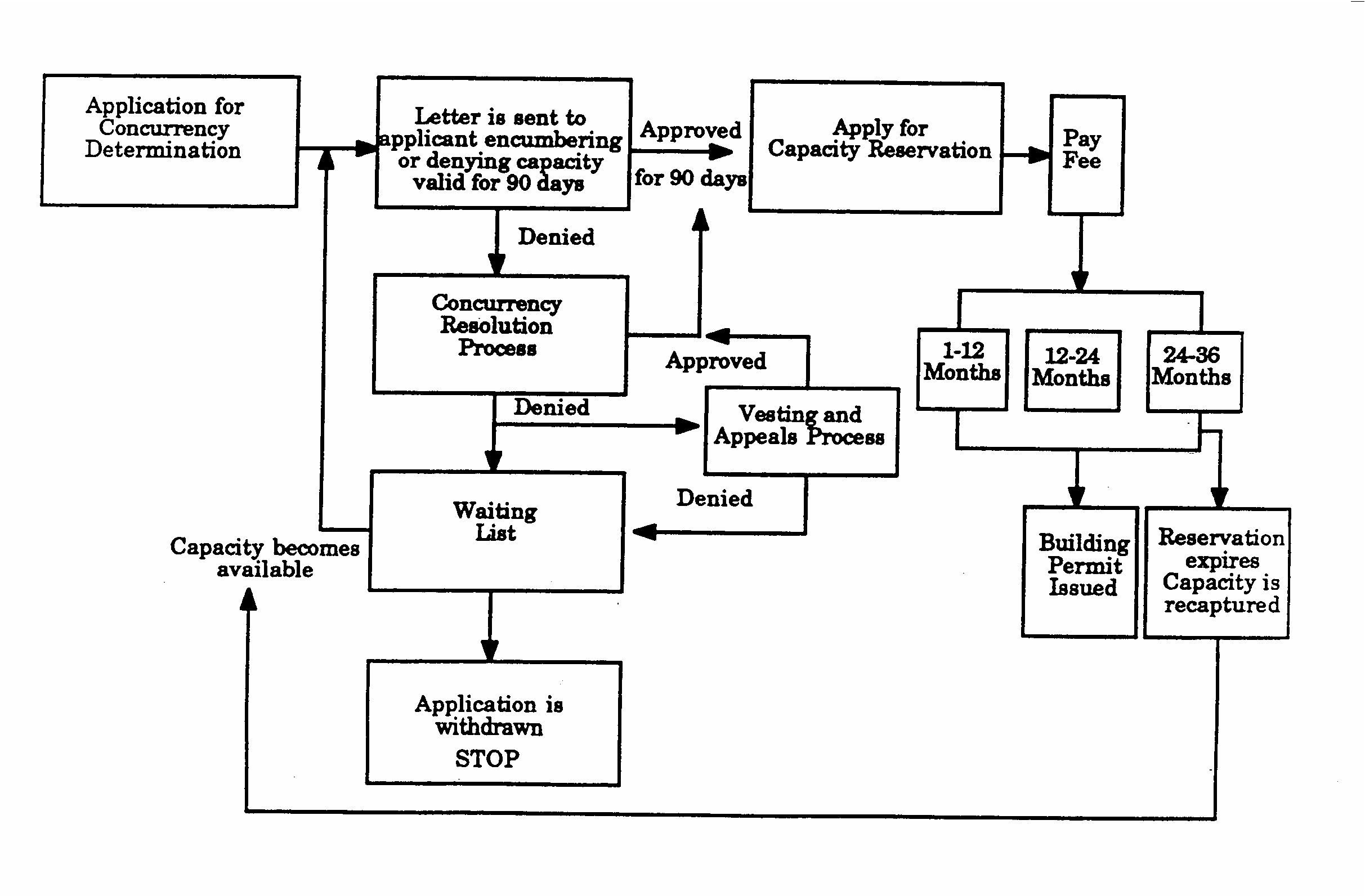 |
Orlando |
 |
Code of Ordinances |
 |
Chapter 59. CONCURRENCY MANAGEMENT |
 |
Part 5. CONCURRENCY ENCUMBRANCE LETTERS |
§ 59.501. Procedure for Concurrency Encumbrance Letter Evaluations.
Within twenty (20) working days after receipt of an application for a CEL, the Concurrency Management Official shall process the application, conduct a concurrency evaluation in accordance with Part 2 of this Chapter, and issue Concurrency Encumbrance Letters or Concurrency Encumbrance Denial Letters according to the following procedure:

A Concurrency Encumbrance Letter dated prior to July 1, 2010, shall be valid for three hundred and sixty-five (365) days from the date of the letter, referred to as the Encumbrance Period, and shall expire at the end of the Encumbrance Period unless the applicant obtains a Capacity Reservation Certificate or is issued a building permit during the Encumbrance Period. See Part 6. A Concurrency Encumbrance Letter dated subsequently to July 1, 2010, shall be valid for ninety (90) days from the date of the letter, referred to as the Encumbrance Period, and shall expire at the end of the Encumbrance Period unless the applicant obtains a Capacity Reservation Certificate or is issued a building permit during the Encumbrance Period. See Part 6.
Application for a Concurrency Encumbrance Letter. An application for a Concurrency Encumbrance Letter (CEL) shall be accompanied with a CEL fee, which shall be set by resolution as determined by City Council from time to time. Any applicant seeking a Concurrency Encumbrance Letter shall submit the following information to the CMO, on a form provided by the CMO. No such application shall be deemed accepted until it is complete.
1)
Property owner's name, address and telephone number.
2)
Applicant's name, address and telephone number.
3)
Parcel I.D. number and legal description.
4)
Proposed use(s) by land use category, square feet and number of units.
5)
Phasing information by proposed uses, square feet and number of units, if applicable.
6)
Existing use of property.
7)
Acreage of property.
8)
Name of DRI, PD, subdivision, office park, or master plan, if applicable.
9)
Site design information, if applicable.
10)
Whether wastewater capacity has been reserved for the proposed development.
11)
Written consent of the property owner, if different from applicant.
12)
Whether the applicant will seek to reserve capacity or to obtain a building permit during the encumbrance period and proposed length of reservation, if applicable.
13)
Proposed allocation of capacity by legal description, if applicable.
Action by CMO if all Public Facilities and Services are Found to be Concurrent. If, during the concurrency evaluation, the CMO determines that all public facilities and services are concurrent, concurrent with conditions, or are presumed to be concurrent pursuant to Parts 3 and 5 of this Chapter, the CMO shall issue the CEL, which shall advise the applicant that capacity is available for reservation or for issuance of a building permit. The date issued shall be deemed to be the date on the CEL. If the applicant seeks a reservation during the encumbrance period, capacity shall only be encumbered in accordance with Part 6 of this Chapter. If the applicant is not the property owner, a copy of the CEL shall also be sent to the property owner. At a minimum, the Concurrency Encumbrance Letter shall include:
1)
Property owner's name, address and telephone number; and
2)
Applicant's name, address and telephone number; and
3)
Concurrency Management Account Number; and
4)
Proposed use(s) by land use category, square feet and number of units; and
5)
The date the CEL was issued; and
6)
The date upon which the CEL expires unless the encumbered capacity is reserved or unless a building permit is issued prior to the CEL's expiration.
(Ord. of 9-16-1991, Doc. #25096; Ord. of 11-16-1992, Doc. #26149; Ord. of 6-22-2009, § 1, Doc. #0906221104; Ord. No. 2017-4, § 1(Exh. A), 2-27-2017, Doc. #1702271206)